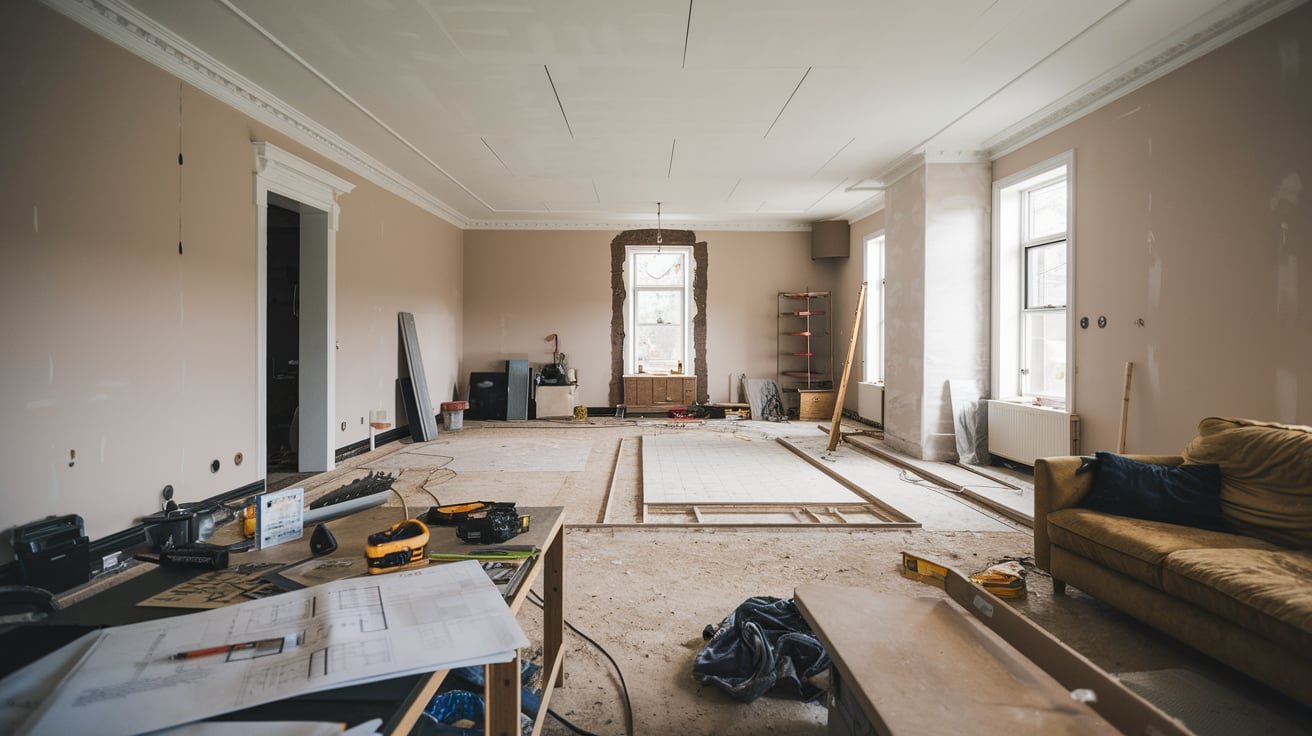Refurbishing a home is an exciting journey that offers endless possibilities to transform your living space. Whether you’re upgrading for comfort, improving aesthetics, or increasing property value, a successful refurbishment requires meticulous planning and execution. This guide provides an in-depth look at the refurbishment process, potential challenges, and practical solutions to ensure your project is a resounding success.
Why Refurbishment Matters
Enhancing Your Living Environment
A home refurbishment allows you to tailor your space to meet your evolving needs. From modernizing outdated interiors to optimizing layouts, refurbishment can make your home more functional and enjoyable.
Boosting Property Value
Well-executed refurbishments significantly enhance a property’s market appeal, making it a worthwhile investment for homeowners planning to sell.
Planning Your Home Refurbishment
Define Your Objectives
Before diving into the refurbishment process, it’s crucial to identify your goals. Ask yourself:
- Do I want to improve aesthetics or functionality?
- Am I addressing structural issues?
- Is this an investment to increase property value?
Set a Realistic Budget
Determine how much you’re willing to spend and allocate funds for unexpected expenses. Obtain quotes from contractors and prioritize essential renovations over cosmetic changes if needed.
Tips for Budget Management:
- Compare prices for materials and labor.
- Factor in permit costs and professional fees.
- Reserve 10-15% of your budget for contingencies.
Create a Detailed Plan
Outline the scope of work, including:
- The areas to be refurbished.
- The timeline for each phase of the project.
- Materials and finishes to be used.
Using a professional project manager or contractor can help streamline this process.
Key Phases of Home Refurbishment
1. Assessment and Inspection
Before starting any work, conduct a thorough inspection to identify underlying issues such as:
- Structural integrity.
- Plumbing and electrical systems.
- Damp or mold problems.
2. Design and Planning
Collaborate with architects or interior designers to create a refurbishment plan that aligns with your vision. Use tools like 3D models or mood boards to visualize the outcome.
3. Securing Permissions
Check local regulations and obtain necessary permits for structural changes or additions. Working without proper permissions can lead to costly fines or project delays.
4. Demolition and Preparation
Prepare the site by removing old fixtures, flooring, or walls. Ensure proper disposal of waste materials and implement safety measures to protect workers and residents.
5. Execution and Construction
This phase includes:
- Structural modifications.
- Installation of plumbing, electrical, and HVAC systems.
- Flooring, painting, and cabinetry work.
6. Finishing Touches
Complete the project with finishing details like installing light fixtures, decorating, and adding furniture.
Challenges in Home Refurbishments and How to Overcome Them
Unforeseen Structural Issues
Challenge:
Discovering problems such as weak foundations or outdated wiring during refurbishment.
Solution:
Conduct a pre-renovation inspection and include a contingency fund in your budget to address unexpected issues.
Delays in Timeline
Challenge:
Supply chain disruptions or labor shortages can cause delays.
Solution:
Work with reliable suppliers and contractors. Maintain open communication and adjust timelines as needed.
Budget Overruns
Challenge:
Costs exceeding initial estimates due to design changes or unforeseen expenses.
Solution:
Stick to your original plan and monitor expenditures closely. Prioritize essential refurbishments over optional upgrades.
Sustainable Refurbishment Practices
Energy Efficiency
Incorporate energy-saving features such as:
- Double-glazed windows.
- Energy-efficient lighting.
- Insulation upgrades.
Use of Sustainable Materials
Choose eco-friendly materials like recycled wood, low-VOC paints, and bamboo flooring to reduce environmental impact.
Waste Management
Implement waste reduction strategies, including recycling and repurposing materials whenever possible.
Benefits of Home Refurbishments
Improved Comfort and Functionality
Refurbishing allows you to adapt your home to better suit your lifestyle, enhancing both comfort and practicality.
Increased Property Value
Renovations such as kitchen upgrades, bathroom remodels, and energy-efficient installations can significantly boost your home’s resale value.
Personalization
Refurbishment provides the opportunity to design a home that reflects your unique style and preferences.
Tips for a Successful Home Refurbishment
Hire Experienced Professionals
Choose contractors, architects, and designers with proven expertise in refurbishments. Request references and review their portfolios before making a decision.
Prioritize Quality
Invest in high-quality materials and skilled craftsmanship to ensure long-lasting results.
Stay Involved
Regularly communicate with your project team and visit the site to stay updated on progress and address any issues promptly.
Final Wording
Home refurbishments are a rewarding endeavor that can transform your living space and add value to your property. By carefully planning, addressing challenges proactively, and working with experienced professionals, you can achieve a successful refurbishment that meets your goals. Whether it’s a minor update or a complete overhaul, the key to success lies in attention to detail and thoughtful execution.
Ready to embark on your refurbishment journey? Contact trusted professionals to bring your vision to life and create a home that you’ll love for years to come.
